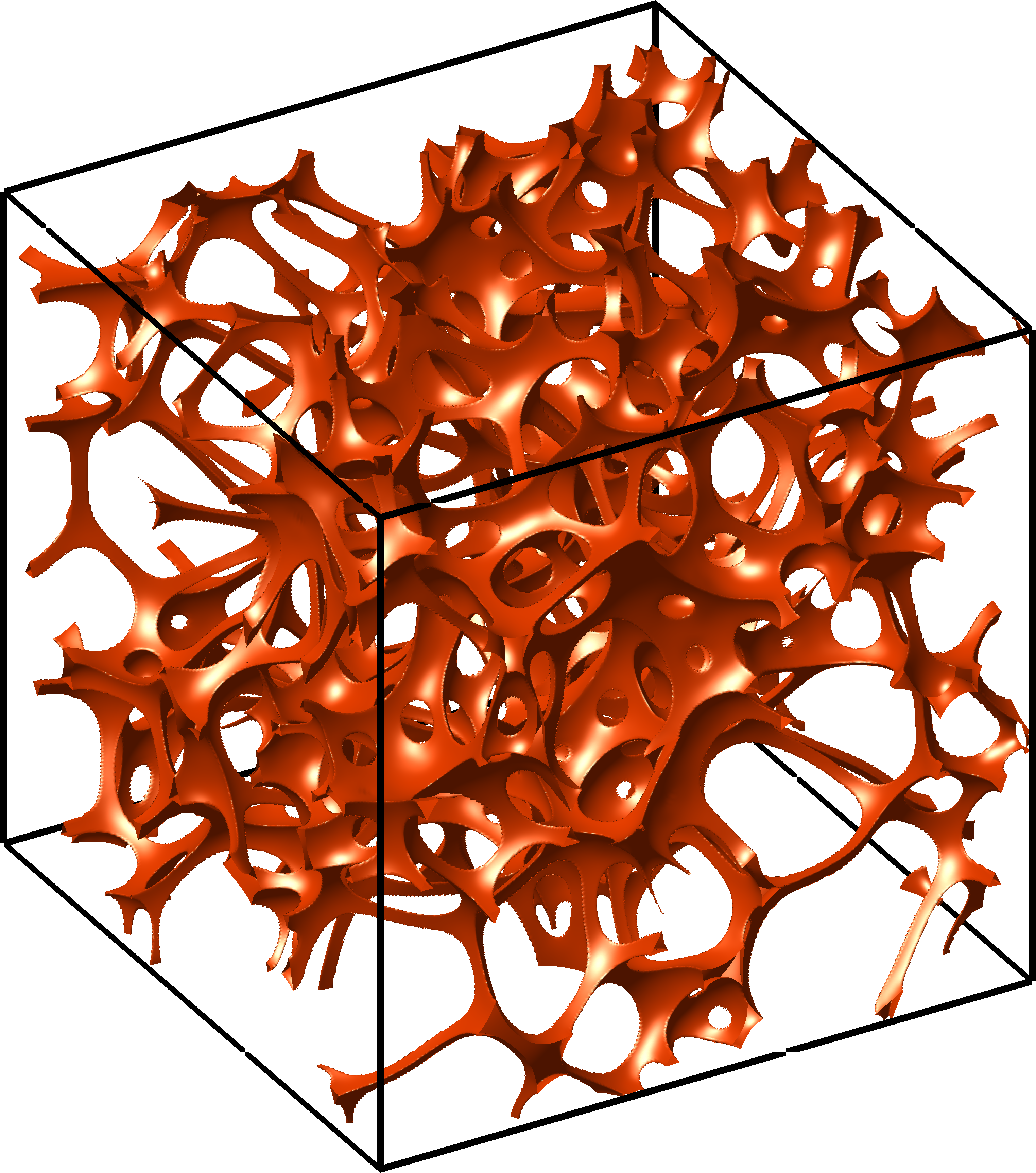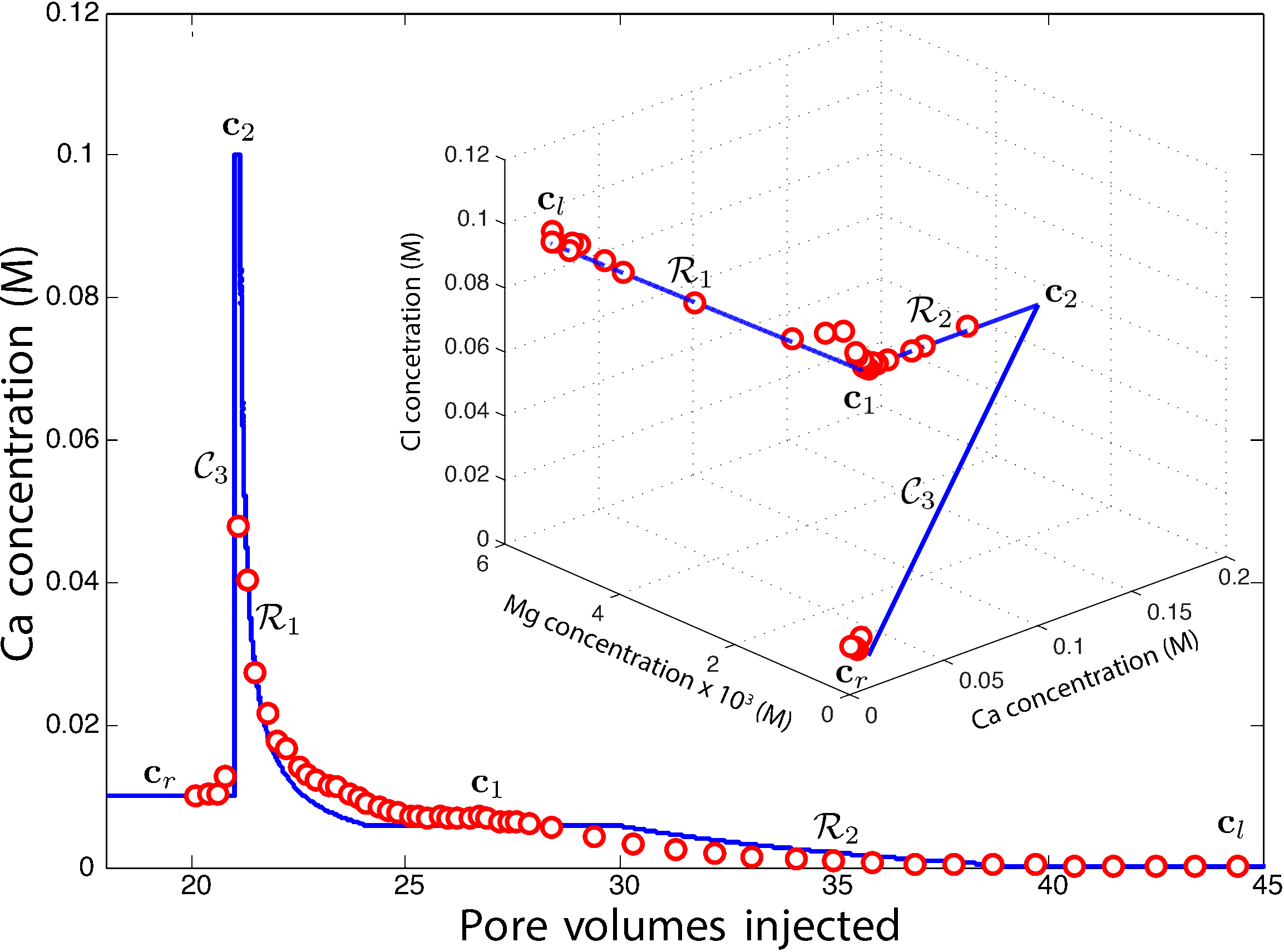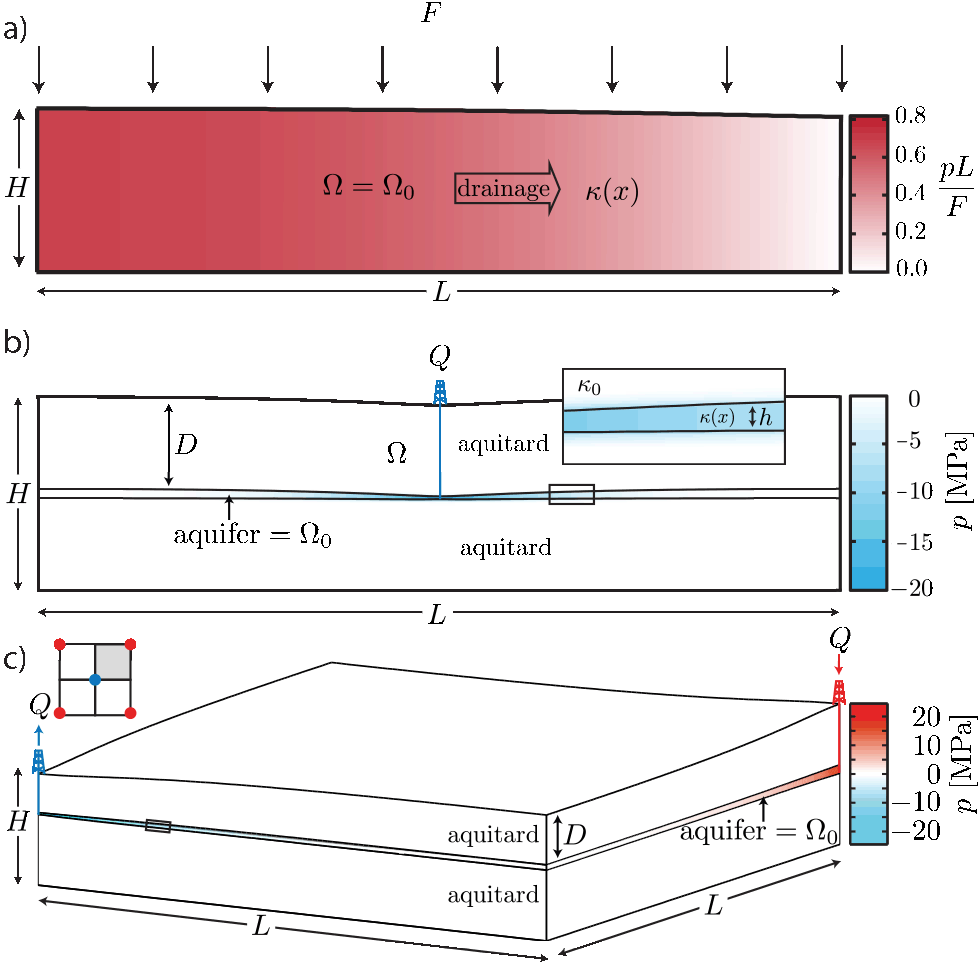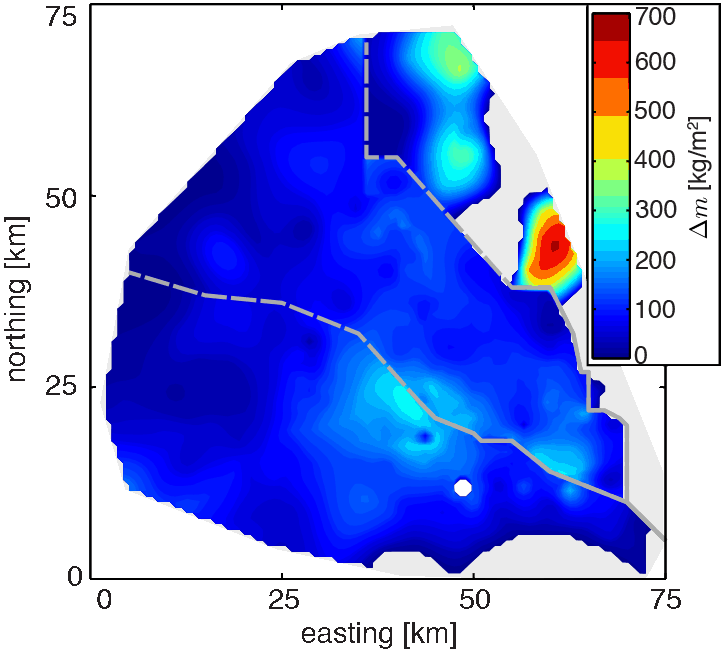Arcane knowledge – on a need to know basis. (Ricky Jay)
Current research topics
 First simulations of texturally equilibrated pore networks between irregular grains (Ghanbarzadeh et al. 2017). |
Dynamics of partially molten materialsPartial melting and melt segregation is an important geological process that leads to chemical differentiation of terrestrial planets. The main characteristics of partially molten materials are: texturally equilibrated pore-spaces; viscous compaction/dilation of the solid matrix; reactive transport controlled by phase equilibria. These lead to a range of physical and chemical phenomena that require special mathematical and numerical treatment and we are developing appropriate numerical models. We are interested in applying these models to the evolution of the continental lithosphere and to understand the role of heterogeneities in partial melting. Ghanbarzadeh et al. (2014, 2015a, 2015b, 2017) |
 Comparison between experimental data for the effluent concentration of Ca2+ (from Voeglin et al. 2000) and our analytical solution to the hyperbolic limit of the governing equations. The insert shows data and solution in the composition space that is central to the analytic solution. Experiments mimic sea-water intrusion into a fresh water aquifer (Venkatraman et al. 2014). |
Reactive transport in porous mediaReactive transport has been recognized as fundamental mechanism for pattern formation in the geological sciences. It determines the chemical evolution of pore fluids as well as the mineralogy and petro-physical properties of the rocks. A dominant feature reaction fronts is the evolution of a sequence of different types of chemical waves that travel with distinct velocities and separate regions of different composition. The theory of systems hyperbolic partial differential equations provides a unifying concept that allows the analysis of the basic structure of these patterns in multi-component and multi-phase systems, including surface and classical reactions as well as multi-phase flows with partitioning. Of particular interest are currently systems with pH-dependent sorption and noble gas partitioning in two-phase flows. Prigiobbe et al (2012a, 2012b, 2013) |
 Several model problems used to test the inversion of surface deformation data for the aquifer properties using fully coupled poroelastic model (Hesse and Stadler 2014). |
Geomechanical inverse problemsSatellite geodesy and continuous GPS networks are providing unprecedented information about deformation of the Earth’s surface. These data have the potential to revolutionize our understanding of the coupling between subsurface flow and deformation. This, however, requires the integration of diverse geodetic and hydraulic data-sets into geomechanical models and we have recently developed a variational approach for joint poroelastic inversion. This topic is a new research area in my group aimed at increasing our understanding of the interactions between faulting/earthquakes and fluid flow in the subsurface. Hesse & Stadler (2014), McCormack & Hesse (2018, 2020), Alghamdi et al. (2020) |
 Bravo Dome is a giant CO2 reservoir in New Mexico that once contained 1.6 GtCO2. This map shows our estimate of the CO2 loss since emplacement 1.2-1.4 Ma ago. A total of 366 MtCO2 (22%) have dissolved into the brine. This is equivalent to 65 years of emission from a coal fired power plant (Sathaye et al. 2014). |
Dynamics of natural CO2 reservoirsCarbon capture and geological storage is the only technology that allows immediate and significant reductions in CO2 emissions from fossil fuels. The long-term storage security depends on the trapping of the CO2 in the subsurface, mostly through dissolution into the brine. Dissolved CO2 is considered to be trapped because it increases the density of the brine and forms a stable stratification. Understanding the magnitude, rate and mechanism of CO2 dissolution into the brine is therefore essential to the long-term fate of geological CO2 storage. The dissolution rate, however, is too slow to be observed during pilot projects, but studies of natural natural CO2 reservoirs can provide unique insights. Placing constraints on CO2 dissolution in natural analogues requires the integration of geochemistry, geophysics and reservoir engineering and an understanding of the ambient hydrogeological system. Sathaye et al. (2014, 2016a, 2016b), Ahkbari & Hesse (2016), Wen et al. (2018), Yu et al. (2018) |

